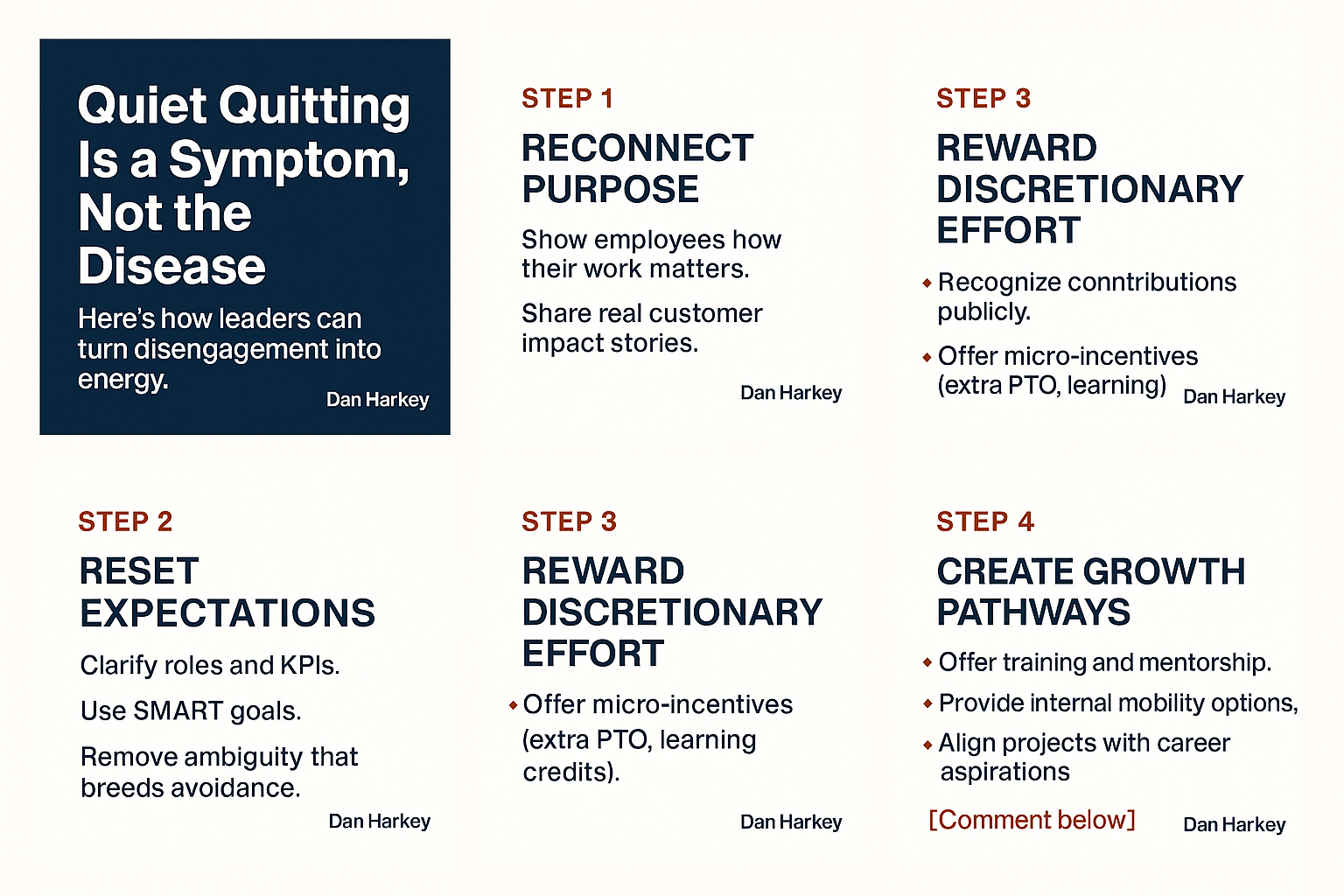Summary
The habits of non- or low-productive employees can spread like a virus through the company. This potential spread should be a cause for caution, and the importance of proactive measures cannot be overstated. As a manager or team leader, it’s crucial to ask yourself: who is responsible for monitoring productivity and attitudes prevalent among the employees? The weight of this responsibility falls on your shoulders. Who is responsible for matching worker output with the goals and objectives of the profit-making enterprise?
Why It Matters
Quiet quitting and quiet resignation aren’t just buzzwords; they’re symptoms of deeper issues: misaligned incentives, lack of recognition, and poor communication. Left unchecked, these behaviors erode productivity, morale, and retention.
Step 1: Spot the Warning Signs. Identifying these signs is crucial for maintaining a productive and engaged workforce.
- Quiet Quitting: This occurs when employees limit their work to only what is specified in their job description, decline extra projects, and disengage from team initiatives. They may not voice their dissatisfaction, but their actions speak volumes.
- Quiet Resignation: Employees mentally check out—characterized by minimal participation, lack of long-term planning, and declining responsiveness.
- Other Indicators: These can include increased absenteeism, presenteeism (being physically present but mentally absent), and task padding (stretching simple tasks to fill time or appear busy).
Step 2: Diagnose the Root Cause
Ask:
- Is the workload sustainable? Burnout often masquerades as disengagement.
- Are expectations clear? Ambiguity breeds avoidance.
- Do employees see growth opportunities? Stagnation kills motivation.
- Is recognition consistent? Lack of appreciation drives withdrawal.
- Are management and leadership adequately conveying written expectations?
Step 3: Apply Targeted Interventions
a. Reconnect Purpose
- Link daily tasks to the company mission.
- Share customer success stories to show impact.
b. Reset Expectations
- Clarify roles and performance metrics.
- Use SMART goals (Specific, Measurable, Achievable, Relevant, Time-bound).
c. Rebuild Trust
- Schedule regular one-on-ones focused on listening, not just reporting.
- Encourage psychological safety—employees should feel safe to speak up.
c. Reward Discretionary Effort
- Recognize contributions publicly.
- Offer micro-incentives for going above and beyond (extra PTO, learning credits).
d. Create Growth Pathways
- Provide training, mentorship, and internal mobility options.
- Align projects with employees’ career aspirations.
Step 4: Monitor and Adjust
- Use pulse surveys to gauge engagement.
- Track early indicators, such as meeting participation and project ownership.
